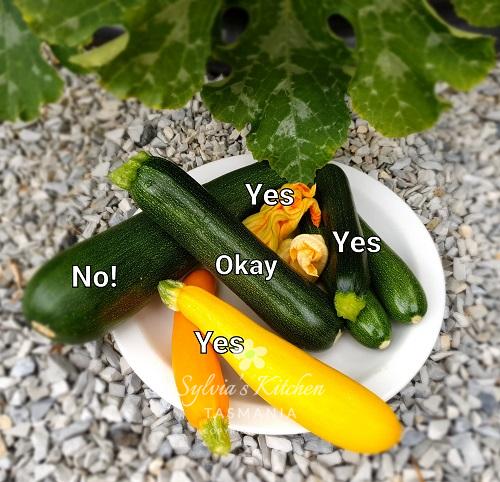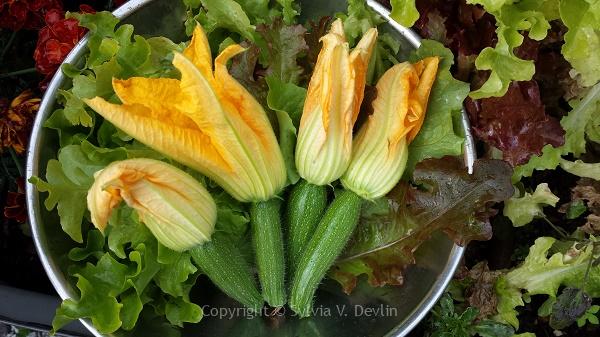Zucchini Tips on growing, harvesting and storing
We all tend to grow too many zucchini, or courgettes as they are known in Europe, and tomatoes for summer, don’t we? Nevertheless, there will be someone in your circle of friends or neighbourhood who forgot to plant them and this is the inspiration to share.
I grow my zucchini plants on the edge of the garden bed so they can gently grow over the top and down the side of the bed. I companion plant with tomatoes, eggplant, basil, parsley, nasturtiums, marigolds and a variety of lettuces. Yep, I pack it in! They are all happy bed fellows.
Please, please, please try to harvest your zucchini when they are young, at an approx. maximum of 14cm long and 1.5-2cm wide. I know it is difficult. If you miss their growth spurt and they end up resembling a small baseball bat, chop them up and pop them into the compost bin or feed them to the cows, if you have any!
Zucchini are part of the Cucurbitaceae family and can produce the toxin Cucurbitacin which functions as a biochemical defence compound in the plant and more prevalent when there is irregular water, high heat and in older zucchini. Hence, when your zucchini reach that stage of, well, inedibility, you are best advised especially to not eat them raw, or cook them, as this toxin is not destroyed through cooking and can lead to some severe gastrointestinal problems. Zucchini also contain a protein called profilin, which can cause an allergic reaction in some people.
We have been caught out in the past when a dish was generously cooked for us with larger than recommended size zucchini. It was not a pleasant experience. Forewarned is forearmed, as they say.
You might have noticed, when picking zucchini, a clear sticky sap is released. This sap can leave sticky marks on your bench top, plates, bowls, etc. and can leave you hands feeling dry and itchy. When harvesting zucchini, allow the sap to dry or immediately rinse the zucchini in cold water, dry then place in a produce bag, wrap loosely and pop them into the fridge.
When powdery mildew hits your zucchini plants, you might notice small insects scurrying all over the leaves. These are ladybird larvae that turn into the boldly coloured yellow and black spotted ladybird that feasts on fungus. I leave these lovely creatures on the leaves and allow them to do the job they were created for. I remove the mildew infested leaves with the insects remaining and place them away from the original plant, so the ladybirds can continue their banquet and lifecycle. Then when these ladies have left, I dispose of the leaves.
I hope these tips help you keep your zucchini under control and enjoy your harvest and cooking.
Stay tuned for more inspirational summer cooking coming soon.
Happy Cooking. Sylvia xx
The Yes and No of Zucchini Harvesting

Join our Fellow Food Lovers. Sign up to our Free Cooking Club.
Be the first to know about new classes and vacancies. Receive add-free recipes, newsletters and more. If you like, Like us on Facebook.



